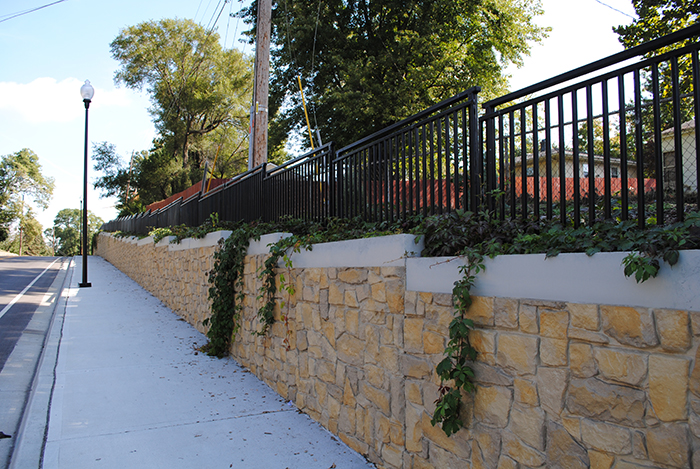3 Practical Engineering Solutions that Solved Complex Problems
Posted on Wednesday, July 14th, 2021 by Affinis CorpIn Project Strategies, tagged in

Liberty Drive Improvements shown above.
Finding the right solutions to solve simple or complicated design issues often requires out-of-the-box thinking. Today, we’re excited to share three practical solutions that solved complex problems.
Upper Cedar Creek
The City of Olathe, Kansas needed to upgrade their stormwater infrastructure in a busy industrial area to address ongoing flooding issues. The existing metal culverts, located under a cul-de-sac that provides access to many businesses, had to be replaced, and maintaining access to those businesses was a top priority for the city.
Our engineers developed a construction phasing plan to install the double 10×5-foot reinforced concrete box (RCB) in multiple phases to avoid a full road closure. The first phase channels traffic to the north traffic lane and adds a temporary signal to direct traffic. To fit the large RCB under the 24-foot-wide road, we extended the south lane by another 20 feet. This provides the room needed for one traffic lane to remain in service while the north portion of the RCB is constructed in phase two. To further expedite construction, the majority of the RCB is to be precast in sections, and our design calls for large block wingwalls instead of cast-in-place.
Liberty Drive Improvements
The City of Liberty, Missouri was widening Liberty Drive, adding sidewalks, curb, and gutter to the area. The project site had a tight right-of-way, utilities, and a very steep 2:1 slope. When we were creating the roadway templates, we realized the design would require a 4:1 slope in one, 800-foot section. This would translate to a 12-foot-tall retaining wall and major excavation.
Given the slope and space constraints, using typical modular or cast-in-place walls wasn’t a great option. Instead, we designed a soldier pile wall, using steel I-beams embedded in a drilled pier. The drilled piers were socketed into the rock a minimum of 5-feet and spaced 8-feet apart. The pre-cast concrete panels are affixed to the front of each one. Choosing this solution meant the city did not have to buy right-of-way and grade behind the wall. It also reduced the amount of excavation and allowed utilities to remain in place.
Route 7 and Country Club Drive
New housing development and two schools were increasing traffic on Country Club Drive. During peak school hours, it was difficult for drivers and buses to access Route 7 via the intersection without a traffic signal. To add a signal here, the City of Pleasant Hill, Missouri had to apply for a signal warrant.
With another signal a short distance away on South Myrtle Street, our traffic group decided to interconnect the signals at both intersections. If the light turned red at one intersection, it would tell the second one to do the same. This meant traffic was only stopped once within the short distance. This smart solution didn’t impede flow and improved access to Route 7 for the area.